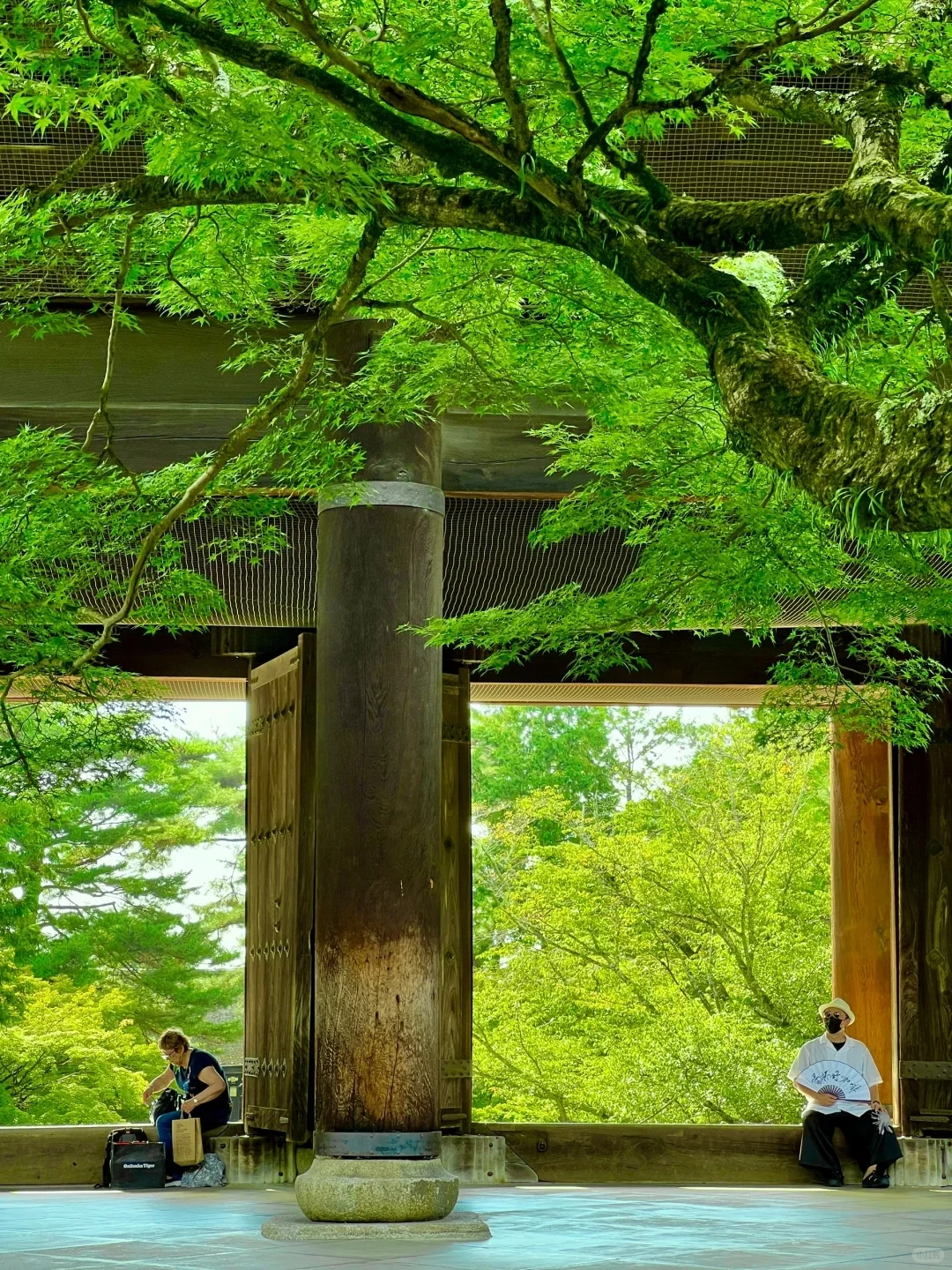



One of many highlights of our travel through Kyoto. As we approached the Golden Pavilion, the reflection on the still water and the contrast with the bright blue sky made for a stunning scene. The entire temple is coated in gold leaf and glistens even more beautifully in the sunlight than you’d expect from photos. It was truly surreal seeing it in person after seeing it in so many travel guides and brochures over the years. I lost count at the number of photos I took to get the best angle and light shot.
The current structure dates back to 1955, as the original temple was unfortunately destroyed in 1950. However, it was originally built in 1397 as a retirement villa for shogun Ashikaga Yoshimitsu before later being converted into a Zen temple. Its design blends Buddhist architecture with garden landscaping and is meant to promote harmony between nature and human-made beauty.
Even with a fair number of people around, it was easy to find quiet moments to take it all in. The surrounding garden is also beautifully maintained, and the path takes you past various traditional features including statues and ponds.
Definitely worth visiting if you are in Kyoto. Arrive early if you want that golden light and fewer people in...
Read moreRokuon-ji Kinkaku (Golden Pavilion) is a stunning Zen Buddhist temple in Kyoto, Japan, famous for its gold-leaf-covered top floors. Originally built in 1397 as a retirement villa for Shogun Ashikaga Yoshimitsu, it was later converted into a temple.
The three-story structure reflects different architectural styles: Shinden-zukuri (imperial palace style) on the first floor, Samurai residential style on the second, and Zen temple style on the third. It sits beside the Kyōko-chi (Mirror Pond), creating a breathtaking reflection.
Despite being burned down in 1950, Kinkaku-ji was rebuilt in 1955 and remains one of Japan’s most iconic landmarks. It symbolizes peace, harmony, and Zen aesthetics, attracting millions of...
Read moreEl Pabellón Dorado, o Kinkaku, es un edificio de tres plantas ubicado en los terrenos del templo. Las dos plantas superiores del pabellón están recubiertas con hojas de oropuro (También conocido como Pan de oro). El primer piso, llamado la Cámara de las Aguas, (Shinden-zukuri), en estilo palacio imperial, evoca la clásica decoración japonesa modulada. Es básicamente una gran habitación rodeada por una baranda. El segundo, llamada la Torre de las Ondas de Viento (Buke-zukuri), es de estilo samurái, un recinto cerrado y con una baranda alrededor que alberga al Bodhisattva Kannon. El tercero, con ventanas, es de estilo templo Zen, y es llamado Kukkyoo-choo, y que alberga una tríada de Budas y 25 figurillas Bodhisattvas. El pabellón funciona como un shariden, guardando las reliquias del Buda. En el techo está ubicado un fenghuang o "fénix chino" dorado. El nieto de Yoshimitsu utilizó el Kinkaku-ji como inspiración para el Ginkaku-ji, que también es un templo budista, que deseaba recubrir de plata. El Pabellón Dorado posee un magnífico jardín japonés inmediatamente adyacente. El estanque que se ubica enfrente es llamado Kyōko-chi (Espejo de agua). En el estanque existen numerosas islas y piedras que representan la historia de la creación budista. En 1950, el pabellón fue incendiado por un monje con sus facultades mentales alteradas; una versión novelada de este evento se encuentra en el libro de Yukio Mishimapublicado en 1956 titulado El pabellón de oro. La estructura actual fue construida en 1955. Recientemente, se detectó que la cubierta de laca japonesa estaba algo deteriorada y por ello se aplicó una nueva capa de laca como también un nuevo recubrimiento en hojas de oro, el trabajo se completó en 1987. También, se restauró el interior del edificio y las pinturas del mismo. En el 2003 se restauró el techo. La zona sobre la que se asienta el Pabellón Dorado alojó hacia el año 1220 una mansión propiedad...
Read more